Tom's Hardware Verdict
The Pixio PX275C Prime rounds a few corners to achieve a low price. But these things do not harm its gaming capabilities in any significant way. At a little more than $300, it provides a solid gaming experience for most players and can get you through the workday too.
Pros
- +
+ Solid image quality with calibration
- +
+ Slick styling with solid build quality
- +
+ Reliable video processing
Cons
- -
No wide gamut
- -
No extra contrast for HDR content
Why you can trust Tom's Hardware
Computer monitors are generally divided into two major categories: gaming and general use. The best gaming monitors push the performance envelope with high refresh rates and technologies like Adaptive-Sync and blur reduction, while general use displays keep it simple with 60 Hz, good color and reliable operation.
A few products fall in between those extremes, like Pixio’s PX275C Prime, which keeps the value quotient high by rounding rather than cutting a few corners while providing a satisfying experience for the casual gamer. It’s a 27-inch QHD/IPS screen with 100 Hz, Adaptive-Sync, attractive styling, solid build quality and a current street price of just over $300.
Pixio PX275C Prime Specs
| Panel Type / Backlight | IPS / W-LED, edge array |
| Screen Size / Aspect Ratio | 27 inches / 16:9 |
| Max Resolution & Refresh Rate | 2560x1440 @ 100 Hz |
| Row 3 - Cell 0 | FreeSync: 48-100 Hz |
| Row 4 - Cell 0 | G-Sync Compatible |
| Native Color Depth & Gamut | 8-bit / sRGB |
| Row 6 - Cell 0 | HDR10 |
| Response Time (GTG) | 4ms |
| Brightness (mfr) | 350 nits |
| Contrast (mfr) | 1,000:1 |
| Speakers | 2x 3w |
| Video Inputs | 1x DisplayPort 1.2 |
| Row 12 - Cell 0 | 1x HDMI 1.4 |
| Row 13 - Cell 0 | 1x USB-C |
| Audio | 3.5mm headphone output |
| USB 3.0 | None |
| Power Consumption | 20.5w, brightness @ 200 nits |
| Panel Dimensions WxHxD w/base | 24.2 x 14.8-20.7 x 7.3 inches (615 x 378-526 x 185mm) |
| Panel Thickness | 1.3 inches (33mm) |
| Bezel Width | Top/sides: 0.35 inch (9mm) |
| Row 20 - Cell 0 | Bottom: 0.35 inch (9mm) |
| Weight | 14 pounds (6.35kg) |
| Warranty | 3 years |
When 27-inch QHD/IPS monitors first appeared about 12 years ago, they were premium displays that cost around $700 for a basic 60 Hz model with sRGB color and not much else. The PX275C Prime sells for $320 and goes beyond the rank and file with 100 Hz, Adaptive-Sync and HDR. Though it won’t break any speed records, it provides enough juice for 100 fps with a mid-tier GPU (see best graphics cards) and relatively low input lag. It’s fast enough to deliver decent motion processing and quick response for all but the most skilled players.
The PX275CP’s IPS panel sports average contrast of around 1,000:1 and an sRGB color gamut. It also supports HDR10 though there is no additional dynamic range available for those signals. HDR requires a manual switch in the OSD, which I’ve seen on every HDR-capable Pixio monitor. No extra color is available, as the sRGB gamut I measured is as wide as it gets. On the plus side, color tracking in HDR mode expands the targets enough that you can see a bit more saturation. I’ll show you how Pixio accomplishes this on page five.
Video processing extends to a reliable 100 Hz refresh rate and Adaptive-Sync over a 48 to 100 Hz range. FreeSync is the native tech, and I verified G-Sync operation in my tests (see FreeSync versus G-Sync), though the PX275CP has not been certified by Nvidia at this time. No blur reduction (backlight strobe) feature is included, but an overdrive toggle makes a subtle improvement in motion resolution. The only other feature catered to gamers is a selection of aiming points.
Though there are faster 27-inch QHD screens out there, but you’ll likely pay more than to get those extra Hertz. If you’re shopping for a good value display that works well for any task, the PX275CP might be a good choice.
Assembly and Accessories
My PX275C Prime sample arrived double boxed and securely packed. I was slightly disappointed by the crumbly foam material inside since Pixio usually uses the flexible stuff, but that is a minor nit.
Removing the base, stand and panel revealed a high build quality standard. This screen is definitely a bit more rugged than other Pixios I’ve reviewed. The cable bundle includes HDMI, USB-C and power cables. The power supply is internal, which is impressive considering the panel’s slim profile.
Product 360
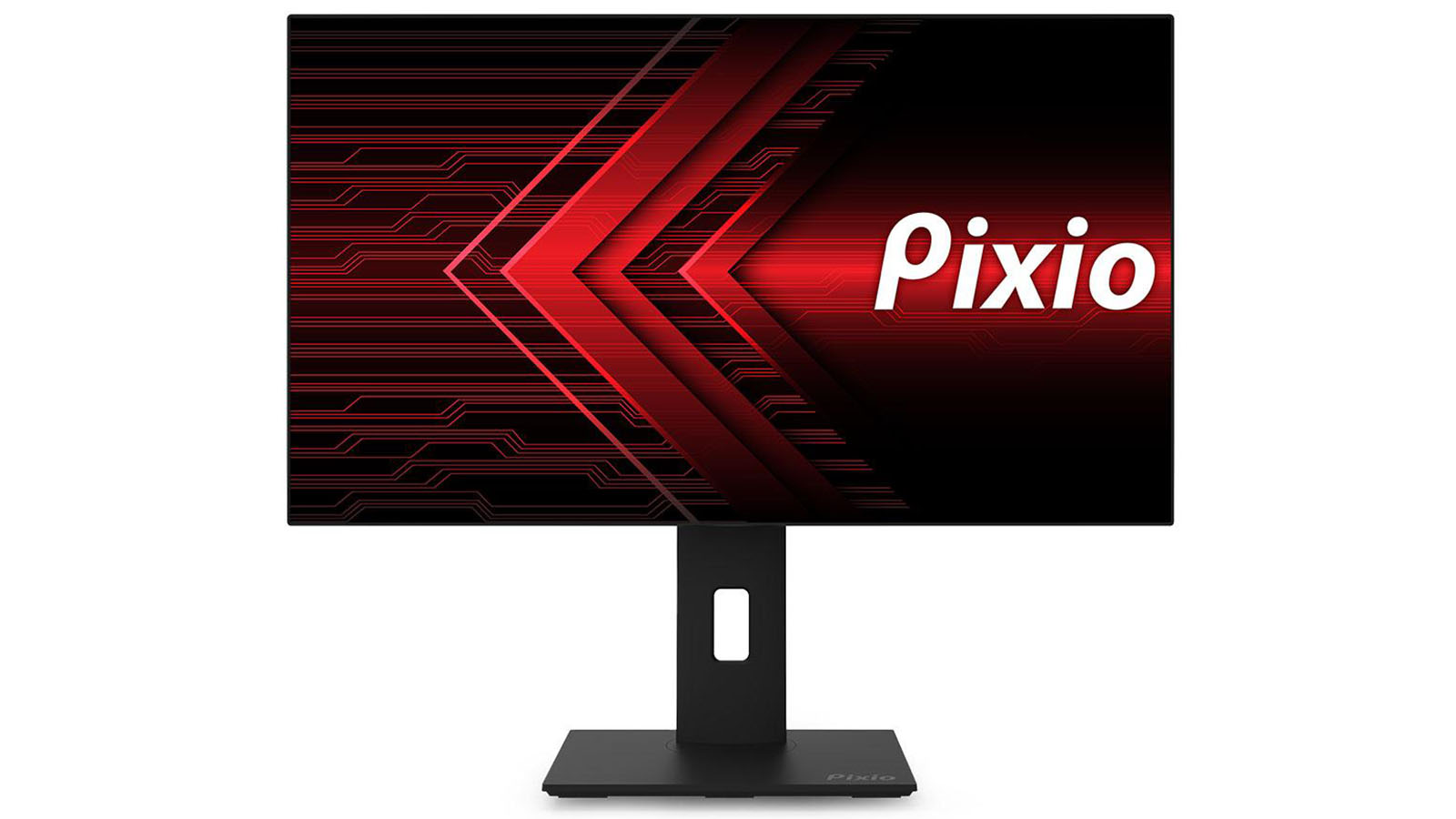
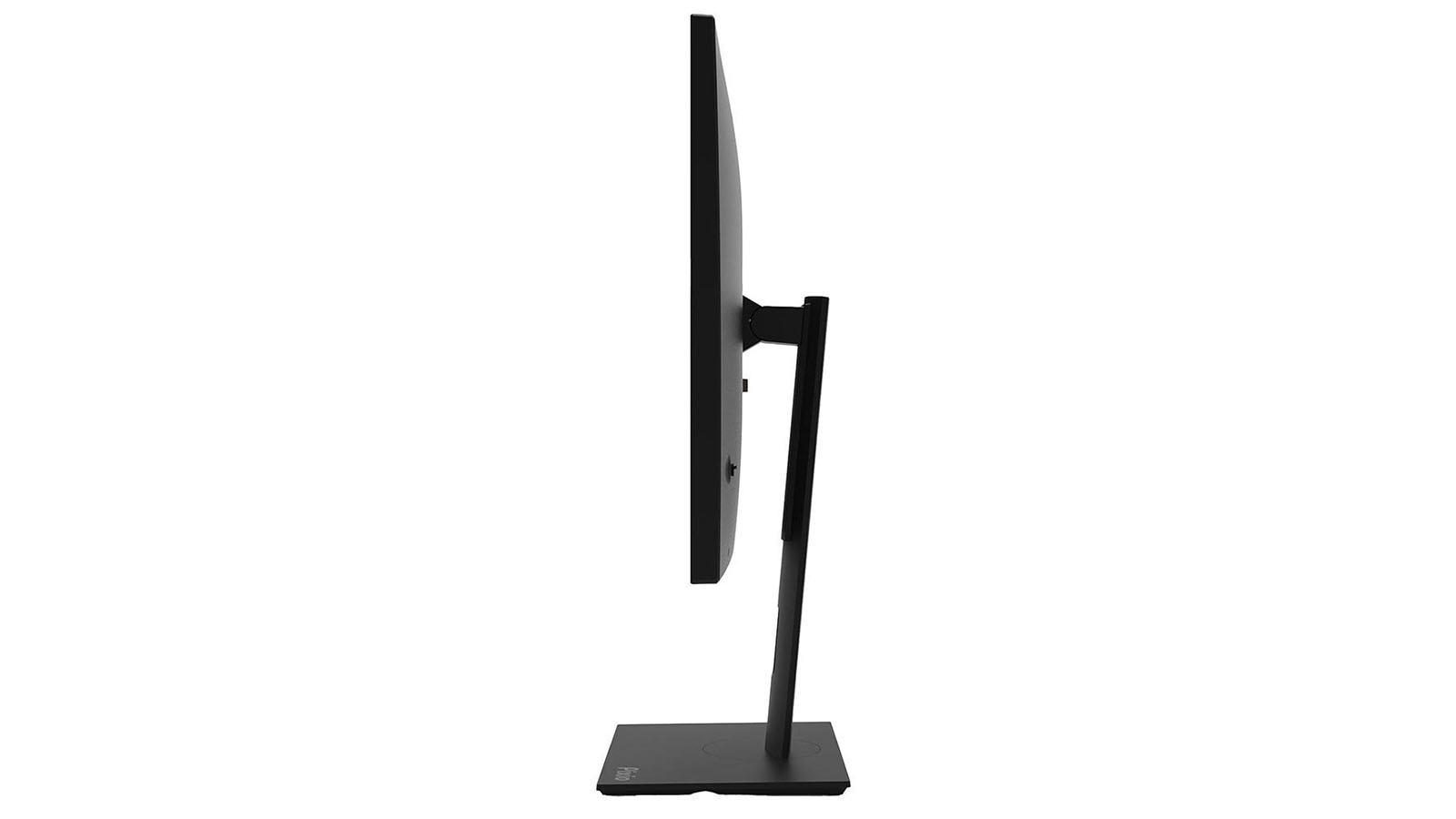

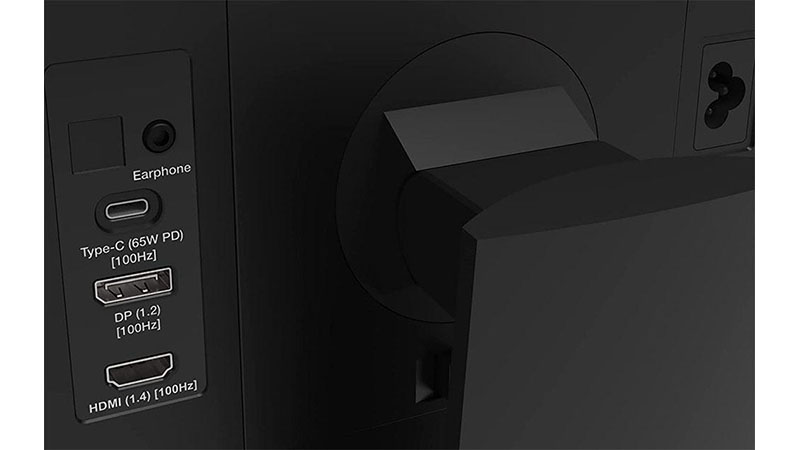
The PX275C Prime sets itself apart from other Pixios with a slim bezel. It’s 9mm wide, which isn’t the thinnest I’ve seen, but that width carries all the way around the screen. This makes a significant visual impact when an image is displayed. Bright pictures make the frame disappear. There is no power LED or logo (or anything else) visible from the front to break up the view, making this a simple yet effective styling choice.
The sole control key is a tiny joystick about a third of the way up the back right side of the panel. It is backlit though you can’t tell that from the front. Clicking it brings up the OSD, or you can use its directional clicks to select an aiming point and change inputs or picture modes.
The stand is also a cut above Pixio’s usual hardware. It has a generous 5.9-inch (150mm) height adjustment along with 45 degrees swivel to either side, 10/20 degrees tilt and a 90-degree portrait mode. Movements are firm and solid with almost no play, comparable to more expensive displays.
The side profile is extra slim at just 1.3 inches (33mm), and there are no side ports for peripherals. You can just see the OSD joystick in the photo above. The stand is slim too, with a large hole for cable management.
Inputs are rear-facing and grouped near the stand’s attachment point. You get one each of HDMI 1.4, DisplayPort 1.2 and USB-C. The latter supports 65 watts of power which is enough to charge just about anything, or to power a laptop. All three inputs support 100 Hz with Adaptive-Sync and HDR. Internal speakers play at medium to low volumes without audible distortion but sound a bit tinny. Better sound can be had by plugging headphones or powered speakers into the 3.5mm audio jack. Though the power supply is internal, you’ll need a Mickey Mouse type plug for it, traditional IEC won’t fit.
OSD Features
Pressing the PX275CP’s joystick brings up a well-stocked OSD. My only complaint is that it’s tiny, much too small to be read from more than three feet away. At the bottom, it shows the current input and the signal information.
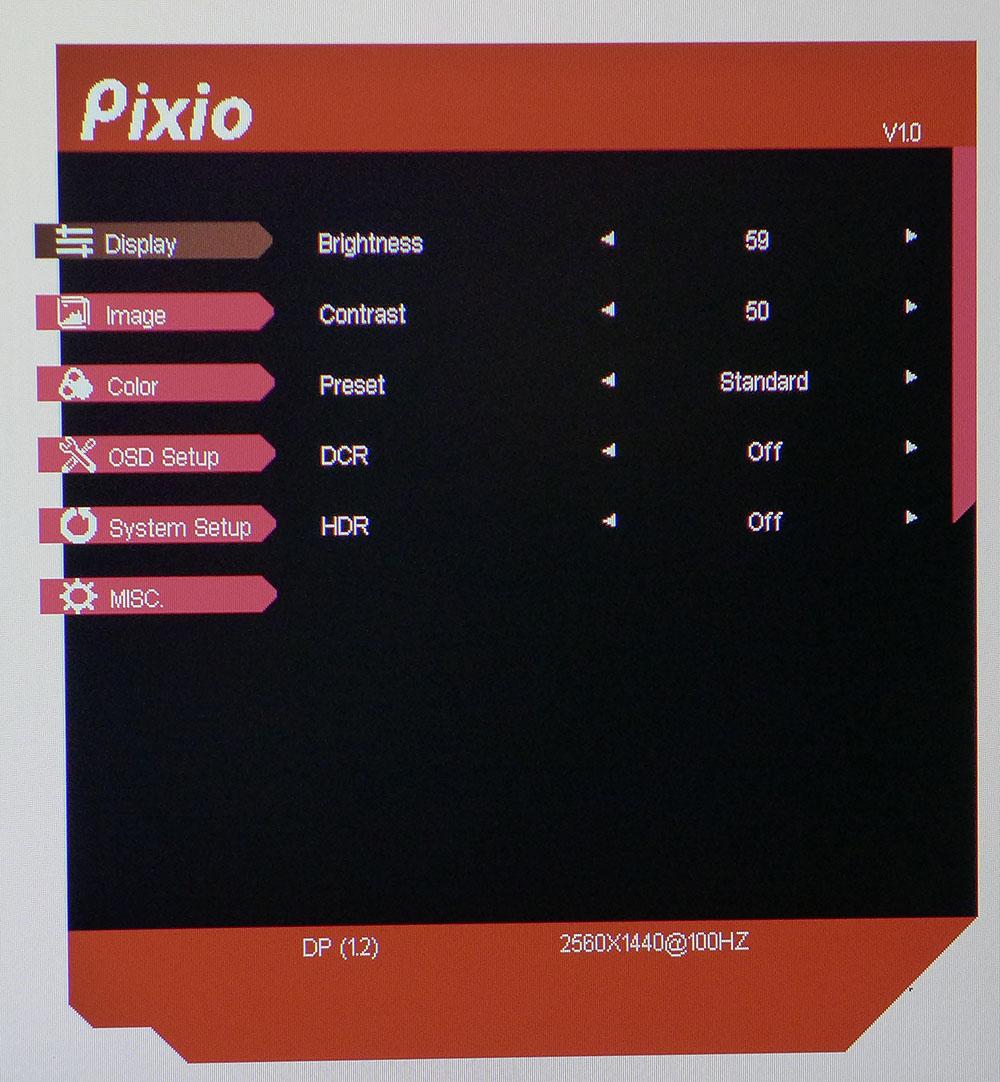
The Display menu has basic luminance controls, six picture modes, DCR dynamic contrast for SDR content and an HDR toggle used to switch between signal types manually. Though there is no extra contrast available (DCR isn’t active in HDR mode), color looks a bit more saturated thanks to some clever tweaking on Pixio’s part. I’ll show you what they did on page five.
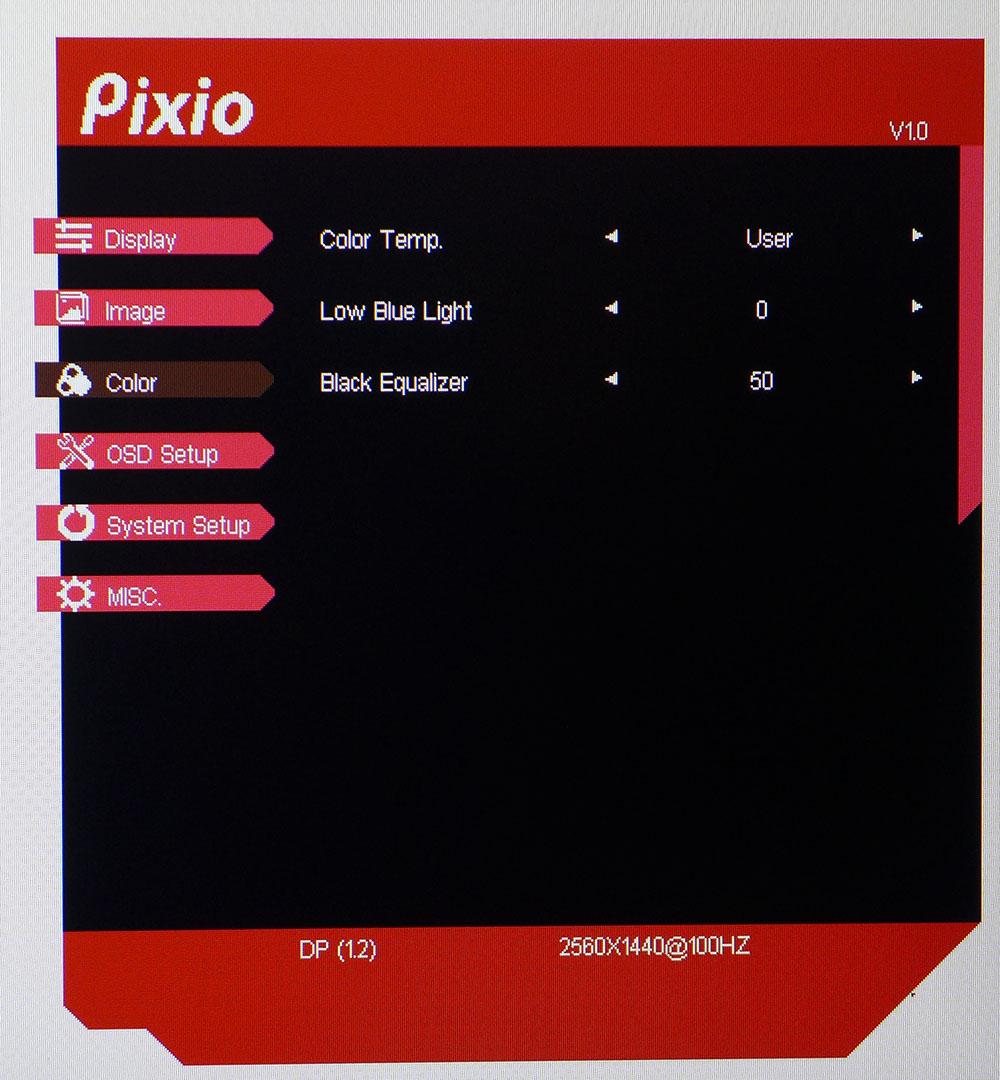
In the Color menu, you’ll find three color temp presets plus a set of RGB sliders. They’re a bit coarse and I had to compromise a bit to find the best grayscale tracking, but the picture is visibly improved by calibration. For reading, there’s a Low Blue Light feature and Black Equalizer that makes shadow detail more visible in games and videos.

In the Misc. menu is a FreeSync/Adaptive-Sync toggle and the overdrive feature. It’s a toggle with just on or off options. I found it only made a subtle improvement to motion resolution, so there is room for improvement there. Finally, there is no backlight strobe feature included.
Pixio PX275C Prime Calibration Settings
The PX275CP ships in its Standard picture mode, which is reasonably accurate but should be calibrated for the best possible picture. Standard is the only preset that allows any image adjustments.
The RGB sliders in the User color temp are a bit tricky to work with as they are very coarse, but after a bit of trial and error, I achieved good grayscale tracking. There are no gamma presets, but luminance tracking is fairly close to 2.2. In HDR mode, there are no adjustments available. Below are the settings I used for testing and gaming.
| Picture Mode | Standard |
|---|---|
| Brightness 200 nits | 59 |
| Brightness 120 nits | 21 |
| Brightness 100 nits | 11 |
| Brightness 80 nits | 0 |
| Contrast | 50 |
| Color Temp User | Red 50, Green 47, Blue 46 |
Gaming and Hands-on
For general use, the PX275C Prime is a very good-looking monitor. Colors are nicely saturated, and the picture is crystal clear. A 27-inch QHD screen provides a density of 109 pixels per inch, so there is no visible pixel structure at close viewing distances. Contrast is good enough for productivity, video and graphics editing. To the eye, it looks like a typical IPS monitor. It doesn’t have the depth of a VA panel (see IPS vs VA panels), but it looks as good as many IPS screens that cost more in SDR mode.
Working in Excel and Word was a pleasure; hence the PX275CP is a very capable enterprise screen and would be an asset on any workplace desktop. Small type is easy to read with no apparent jaggies or anti-aliasing. The color palette was natural, but since it is sRGB, it was a little less vivid than some other tested monitors. To be fair, I have been spoiled by wide gamut screens.
HDR in Windows looks washed out unless the material being viewed is HDR encoded. Though I could engage the HDR mode in the PX275CP’s OSD, it does not emulate HDR. Contrast is so extreme that most shadow and highlight detail is lost. But once you bring up a game like Call of Duty WWII, it looks much better. However, it does not look better than SDR. With no extra contrast or brightness available, it looks about the same. Some warm colors are a tad more vibrant, but there is no significant benefit to using HDR in games.
I noted the same thing in Doom Eternal. This game has an extensive set of HDR calibration controls which I used to bump up color saturation. In this instance, I did see a slight improvement, but again, there was no additional contrast.
Video processing in all cases was excellent. Running at 100 Hz showed a little softness during fast motion sequences, but that is just as likely because I’m so used to faster screens. If you’re coming from a 60 Hz monitor, the PX275CP will be a significant upgrade. Pegging the FPS counter at 100 made things nice and smooth. I noted that the overdrive only made a slight reduction in motion blur. Pixio could make it a little more aggressive for better results.
Adaptive-Sync worked flawlessly on both G-Sync and FreeSync platforms. I could not discern a difference between the two technologies. I never noticed any lag or stuttering, nor were there any frame tears. The PX275CP is a perfectly competent gaming monitor well suited for any task: work, play or entertainment.
Current page: Features and Specifications
Next Page Response, Input Lag, Viewing Angles and Uniformity
Christian Eberle is a Contributing Editor for Tom's Hardware US. He's a veteran reviewer of A/V equipment, specializing in monitors. Christian began his obsession with tech when he built his first PC in 1991, a 286 running DOS 3.0 at a blazing 12MHz. In 2006, he undertook training from the Imaging Science Foundation in video calibration and testing and thus started a passion for precise imaging that persists to this day. He is also a professional musician with a degree from the New England Conservatory as a classical bassoonist which he used to good effect as a performer with the West Point Army Band from 1987 to 2013. He enjoys watching movies and listening to high-end audio in his custom-built home theater and can be seen riding trails near his home on a race-ready ICE VTX recumbent trike. Christian enjoys the endless summer in Florida where he lives with his wife and Chihuahua and plays with orchestras around the state.